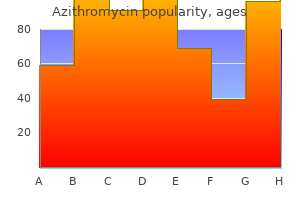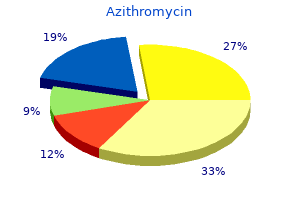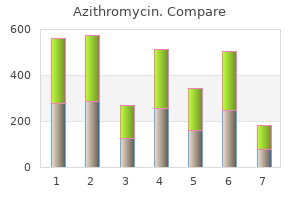"Order azithromycin 250mg free shipping, antibiotics for dogs ears uk".
By: O. Gorn, M.A., M.D.
Co-Director, Duquesne University College of Osteopathic Medicine
Good advice is to return to old fashioned home cooking: with its flour and butter anti bacteria cheap azithromycin 100mg with mastercard, lard and cream virus sickens midwest buy generic azithromycin line, homemade pasta antibiotics not safe during pregnancy azithromycin 250 mg discount, olive oil and soup infection 3 metropolis collapse generic 250 mg azithromycin overnight delivery, coarse cereal grains and plain fruit. Gone are the fruit juices, flour mixes, crackers and sweets that fill grocery shelves. Time is the great inhibitor but if you have the means or the help, the best advice, nutritionally, is a return to old-fashioned cooking and recipes. Use her wooden spoons, glass glasses, and plain dishes, her wooden and straw bowls and enamel pots and pans. But a good salt rule is to either cook with it or have it on the table, but not both. Use aluminumfree sea salt, and make sure the salt is sterilized by heating five minutes at 400°F in a glass pie plate to kill mold. The best salt is a mixture of 1 part of your aluminum-free, sterilized sea salt and 1 part potassium chloride (another kind of salt, see Sources). Potassium ousts sodium (salt) from your body, so you can use twice as much of this kind of salt! It is important to find the poison as soon as you can since the rest of the body will soon be affected, too. It is a herculean task but only gets harder each day, so keep notes as you ask: Is there new carpeting? The list is endless and the situation looks hopeless because so many new things can happen in two weeks. To answer each question, test the item using your Syncrometer searching technique. To test the air, take a dust sample off the kitchen counter or table (this gives you fresh dust). Be sure to test everything eaten in a two week time period: unusual things like popcorn, candy, crackers, cookies, health foods and special powders. A consolation is that you will find a number of bad foods that are not necessarily the tremor causes but which cause other health problems. Let us imagine that the air (dust) sample proves toxic (resonates with the saliva sample). Suppose the water proves toxic (appears in your white blood cells); search for lead, copper, and cadmium. Although municipal water tests occasionally detect small amounts of propyl alcohol, benzene, or wood alcohol, I have never detected them-you need not search for them. Bacteria, coming from teeth and jaw (bone infections, called cavitations) may not seem as recent as two weeks. But something recent may have aggravated them, so they now can enter more easily into the blood and brain. It is wisest to check this possibility with a dentist before doing weeks of other testing. Going after a tremor problem in this logical way always finds the cause of tremor whether its a simple short attack or a situation of long standing tremor with head shaking and drooling. If your situation is extra difficult, you will at least improve it and stop its progression. When you find the culprit, you not only will be stopping the tremor, you will be improving a lot of other conditions along the way. Conditions like hesitant speech, shuffling walk, getting up stiffly and slowly from a chair. By the time you have identified the culprits (probably 20 hours of work) surely you have won the right to make changes. Even when the tremor lessens and the elderly person plainly states they feel better, family members may disregard your recommendations. Make their choices clear: · Either the inside door to the garage gets sealed off or the cars and lawn mower get parked outside and anything containing gasoline or solvents gets put in a detached shed. Caffeine speeds up the heart; then the overworked heart has to "take time out" for itself by missing a beat.
Ginseng (Ginseng, American). Azithromycin.
- What is Ginseng, American?
- Are there safety concerns?
- What other names is Ginseng, American known by?
- How does Ginseng, American work?
- Stress, anemia, insomnia, gastritis, impotence, fever, attention deficit-hyperactivity disorder (ADHD), HIV/AIDS, fibromyalgia, breast cancer, and other conditions.
- Are there any interactions with medications?
- Is Ginseng, American effective?
Source: http://www.rxlist.com/script/main/art.asp?articlekey=96929

Here consideration is given only to the canine ancylostomes virus zero portable air sterilizer purchase azithromycin 250 mg free shipping, with particular focus on A antibiotics origin purchase azithromycin 250mg overnight delivery. Man is an aberrant host antibiotics for uti black and yellow generic 100 mg azithromycin visa, in which the infective larvae cannot complete their development cycle and become adults antibiotic resistance marker genes purchase azithromycin us. Its life cycle is similar to that of the other ancylostomes (see the chapter on Zoonotic Ancylostomiasis). Human cutaneous larva migrans occurs more frequently in tropical and subtropical areas. The fact that cases appear only sporadically in the literature suggests that it is a relatively infrequent condition. Nevertheless, a hospital in Paris, France, recorded 269 cases in a two-year period (Caumes et al. The Disease in Man: the infective larva produces a pruriginous papule upon penetrating the skin. In the days that follow, the larva travels around in the germinal layer and produces sinuous tunnels, advancing a few millimeters to several centimeters a day and forming vesicles along the tunnels on the outer surface of the skin. The migration of the larvae and the corresponding tissue reaction cause intense pruritus, especially at night, and may keep the patient awake. Secondary bacterial infections are common because the pruritus induces the patient to scratch. The lesion, which can be single or multiple, is most often located on the lower extremities (73% of the cases) and less frequently on the trunk and upper extremities (7% of the cases), but it can occur on any part of the skin exposed to contaminated soil. The larvae usually remain alive and travel in the skin for two to eight weeks, at the end of which the disease is cured spontaneously. However, there have been patients in whom the infection persisted for as long as 18 to 55 months (Richey et al. In a few cases, the levels of IgE and peripheral eosinophilia are elevated (Jelinek et al. Some patients suffer a transitory pneumonitis with eosinophilia (Loeffler syndrome), and in such cases larvae may be found in the sputum. This finding confirms the hypothesis that the larvae of animal ancylostomids can sometimes produce visceral infections in man. The Disease in Animals: the disease caused by ancylostomes in carnivores is mainly intestinal and is manifested by diarrhea, anemia, and malabsorption. The lesions are limited to the interdigital spaces, and the most prominent signs are erythema, pruritus, and papules that disappear about five days after the initial infection. Source of Infection and Mode of Transmission: the source of infection is infective ancylostomid larvae found in the soil. The larvae develop from eggs that are shed in the feces of infected dogs or cats and land in a favorable environment- i. In countries with a temperate climate, the human infections occur in summer, whereas in tropical climates, they occur during the rainy season. The groups most exposed to the infection are children who play in the sand; workers who have close contact with the soil, such as gardeners, farmers, construction workers, and miners; and people who spend time at the beach. Diagnosis: Clinical diagnosis is based on the nature and symptomatology of the lesions-i. Although clinical detection can be challenging, in a series of 269 patients presenting at a tropical disease unit, cutaneous larva migrans was the most frequent diagnosis (25%), compared with pyoderma (18%), pruritic arthropod-reactive dermatitis (10%), myiasis (9%), tungiasis (6%), and urticaria (5%) (Caumes et al. Diagnosis can be confirmed by biopsy of the affected skin to confirm the presence of larvae, but this method is only about 25% efficient. It is also difficult to identify the parasite in histological section, and because of this difficulty, it has not been possible to determine the percentage of cases due to A. Differential diagnosis should take into account the other parasites mentioned at the beginning of this chapter. Control: the principal control measures are regular treatment of dogs and cats and the elimination of stray animals to reduce contamination of the soil. Dogs and cats should not be allowed on beaches or in places where children play in the sand. Whenever possible, areas susceptible to contamination should be kept dry, clean, and free of vegetation. The larvae of Ancylostoma live for almost a month in moist and grassy soils, but only one or two days on terrain that is bare, dry, and in direct sunlight (Barriga, 1997).

Licensing of new antibiotic word parts 250mg azithromycin visa, improved antibiotic ointment for babies purchase generic azithromycin, and safer vaccines; establishment of an adolescent immunization platform; development of vaccines against cancer (eg antibiotic resistance in humans purchase 100mg azithromycin amex, human papillomavirus and hepatitis B vaccines); and application of novel vaccine-delivery systems promise to continue the advances in preventive medicine achieved during the course of the 20th century doctor prescribed antibiotics for sinus infection best purchase for azithromycin. The advent of populationbased postlicensure studies of new vaccines facilitates detection of rare adverse events temporally associated with immunization that were undetected during large prelicensure clinical trials. Each edition of the Red Book provides recommendations for immunization of infants, children, and adolescents. Comparison of 20th Century Annual Morbidity and Current Morbidity: Vaccine-Preventable Diseasesa Disease Smallpox Diphtheria Measles Mumps Pertussis Polio (paralytic) Rubella Congenital rubella syndrome Tetanus a 20th Century Annual Morbidityb 29 005 21 053 530 217 162 344 200 752 16 316 47 745 152 580 20 000 2013 Reported Casesc 0 0 184 438 24 231 0 9 0 19 18d Percent Decrease 100 100 >99 >99 88 100 >99 100 97 >99 National Center for Immunization and Respiratory Diseases. An additional 13 cases of Hib are estimated to have occurred among the 212 reports of (younger than 5 years) with unknown serotypes. Comparison of Prevaccine Era Estimated Annual Morbidity With Current Estimates: Vaccine-Preventable Diseasesa Disease Hepatitis A Hepatitis B (acute) Pneumococcus (invasive) All ages <5 y Rotavirus (hospitalizations, <3 y) Varicella a Prevaccine Era Annual Estimate 117 333b 66 232b 63 067b 16 069b 62 500f 4 085 120b 2012 Estimate 2890c 18 800c 31 600d 1800e 1250g 216 511h Percent Decrease 98 72 50 89 98 95 National Center for Immunization and Respiratory Diseases. Historical Comparisons of Vaccine-Preventable Disease Morbidity for vaccine-preventable diseases in the United States. Sources of Vaccine Information In addition to the Red Book, which is published every 3 years, physicians have evidencePediatrics. The Recommended Immunization Schedule for Persons Age 0 Through 18 Years for the United States is published annually in February (http:/ /redbook. For additional sources of information on international travel, see International Travel (p 101). Annual course offerings include the Immunization Update, Vaccines Epidemiology and Prevention of Vaccine-Preventable Diseases. The course schedule, slide sets, and written materials can be accessed online ( Appendix I (p 975) provides a list of reliable immunization information resources, including facts conNational Network for Immunization Information ( Information can be obtained from state and local health departments about current epidemiology of diseases; immunization recommendations; legal from the World Health Organization ( Online on-time and catch-up immunization schedulers are available for use by parents, other care providers, and health care professionals. The schedulers are based on the recommended immunization schedules for children, adolescents, and adults. The schedulers, which can be downloaded, allow the user to determine vaccines needed by age and are useful for viewing missed or skipped vaccines 2a. Although parents receive information from multiple sources, they consider health care professionals their vaccines helps forge a meaningful relationship. Several factors contribute to parental general; (2) lack of understanding of the severity of and communicability of vaccinepreventable diseases; (3) opposing information and misinformation from other sources (eg, alternative medicine practitioners, anti-vaccination organizations and Web sites, and some religious groups); (4) perceived risk of serious vaccine adverse effects; (5) mistrust of the source of information regarding vaccines (eg, vaccine manufacturer, the government); (6) concern regarding number of injections to be administered simultaneously; (7) delivery of information in a culturally insensitive manner or that is not tailored to individual concern; and (8) delivery of information at an inconvenient time or in a hurried manner. Some people view the risk of immunization as disproporof vaccine-preventable diseases in the United States because of the success of the immunization program. Others may dwell on sociopolitical issues, such as mandatory immunization, informed consent, and the primacy of individual rights over that of Health care professionals should determine, in general terms, what parents understand about vaccines their children will be receiving, the nature of their concerns, and what information should be provided to address their concerns. Misconceptions that are contrary to the science-based evidence about vaccine safety and effectiveness are associated with delayed immunization and underimmunization. Common Misconceptions/ Myths About Immunizationsa,b Claims Natural methods of enhancing immunity are better than vaccinations. Immunity from a preventive vaccine provides protection against disease when a person is exposed to it in the future. That immunity is usually although several doses of a vaccine may have to be response. Epidemiology-often used to establish vaccine safety-is not science but number crunching. Prior to the use of vaccinations, these In the 19th and 20th centuries, some infectious diseases diseases had begun to decline because began to be better controlled because of improveof improved nutrition and hygiene. However, vaccine-preventable diseases decreased dramatically after the vaccines for those diseases were licensed and were given to large numbers of children. Importantly, natural infections like mune system, increasing the risk of other infections. These studies are performed to ensure that new vaccines do not affect the safety or effectiveness of existing vaccines given at the same time and that existing vaccines administered at the same time do not affect the safety or effectiveness of new vaccines. Vaccines can be delayed, separated, and Many vaccine-preventable diseases occur in early infana series of vaccines over time. Any delay in receiving age-appropriate immunization increases the risk of diseases that vaccines are administered to prevent.

Chain of custody - a record that establishes the complete chronological disposition of an entity of concern virus 07 purchase 250mg azithromycin free shipping. Cluster - aggregation of cases of a disease or other health-related condition antimicrobial silver gel purchase azithromycin 500mg visa, which are closely grouped in space and time antibiotics for acne initial breakout cheap azithromycin 250mg mastercard. Enrollment in the study is based on exposure characteristics or membership in a group antibiotics nursing considerations order azithromycin amex. Disease, death, or other healthrelated outcomes are then ascertained and compared. Commercial confidential trade secrets protected by law from public disclosure. Unlawful release of this information can result in legal punishment, including imprisonment. Common source outbreak - outbreak that results from a group of persons being exposed to an infectious agent or toxin from a single source. This is a measure of statistical significance; if a confidence interval includes the value 1. Confirmed cases a case that has met the case definition and with a laboratoryidentified etiology. Confirmed outbreak - clusters (see above) which are confirmed by laboratory or epidemiologic study to be caused by a common agent or among persons who have shared a common exposure. Contamination - the presence of an infectious, chemical, or physical agent or substances in or on water, milk, and food that has the potential to cause harm, including illness or injury. Controls in a case-control study, comparison group of persons without disease/illness. Epidemic - the occurrence of more cases of disease than expected in a given area or among a specific group of people during a particular period of time. Epidemic curve (Epi curve) - a histogram that shows the course of a disease outbreak or epidemic by plotting the number of cases by time of onset. Epidemic curves help characterize an outbreak and give clues about the source of the outbreak. Food-specific attack rate - the food-specific attack rate table compares the illness rate among those who ingested specific foods at an event or meal to the illness rate of those who were at the event or meal but did not ingest these food items. Food worker - person directly involved in producing, harvesting, processing, packaging, preparing, or storing the food under investigation. Monitoring and verification steps are included in the system, again, to assure that potential risks are controlled. Host - a person or other living organism that can be infected by an infectious agent under natural conditions. Hypothesis - A supposition arrived at from observation or reflection that leads to refutable predictions. Incubation period - the time period between exposure to an infectious agent and the onset of signs and symptoms of disease. Index case - the first case among a number of similar cases that are epidemiologically related. Infection - the entry and development of multiplication of an infectious agent in the body of man or animals. Infection is not synonymous with infectious disease: the result may not be apparent or manifest. The presence of living infectious agents on exterior surfaces of the body is called "infestation". The presence of living infectious agents upon articles of apparel or soiled articles is not infection, but represents contamination of such articles. Line List - a table listing case names, age, sex, onset time, residence, symptoms, employment, etc. Matching - the process of making a study and comparison group comparable with respect to extraneous factors. Individual matching relies on identifying individual subjects for comparison, each resembling a study subject on the matched variables.
Purchase generic azithromycin online. shortened antimicrobial treatment for AOM in young children.


